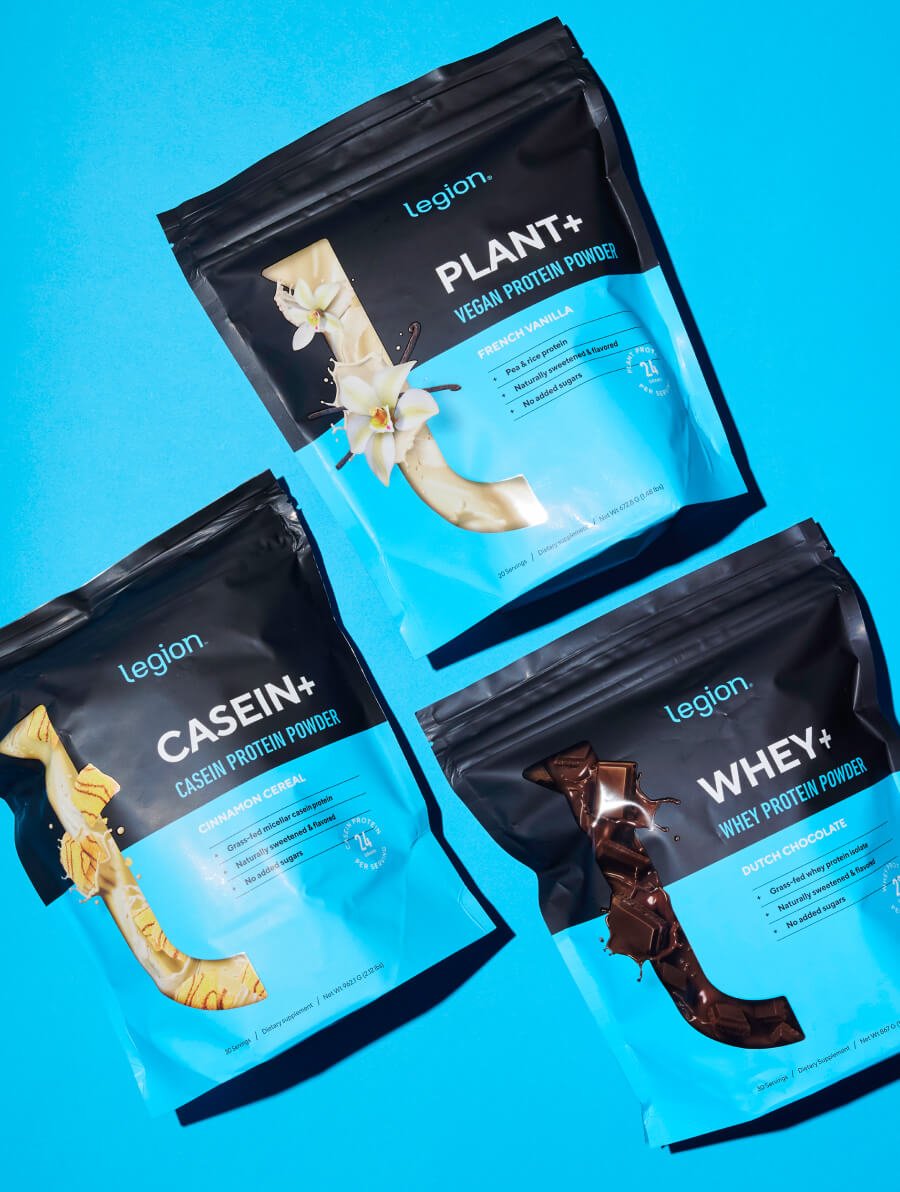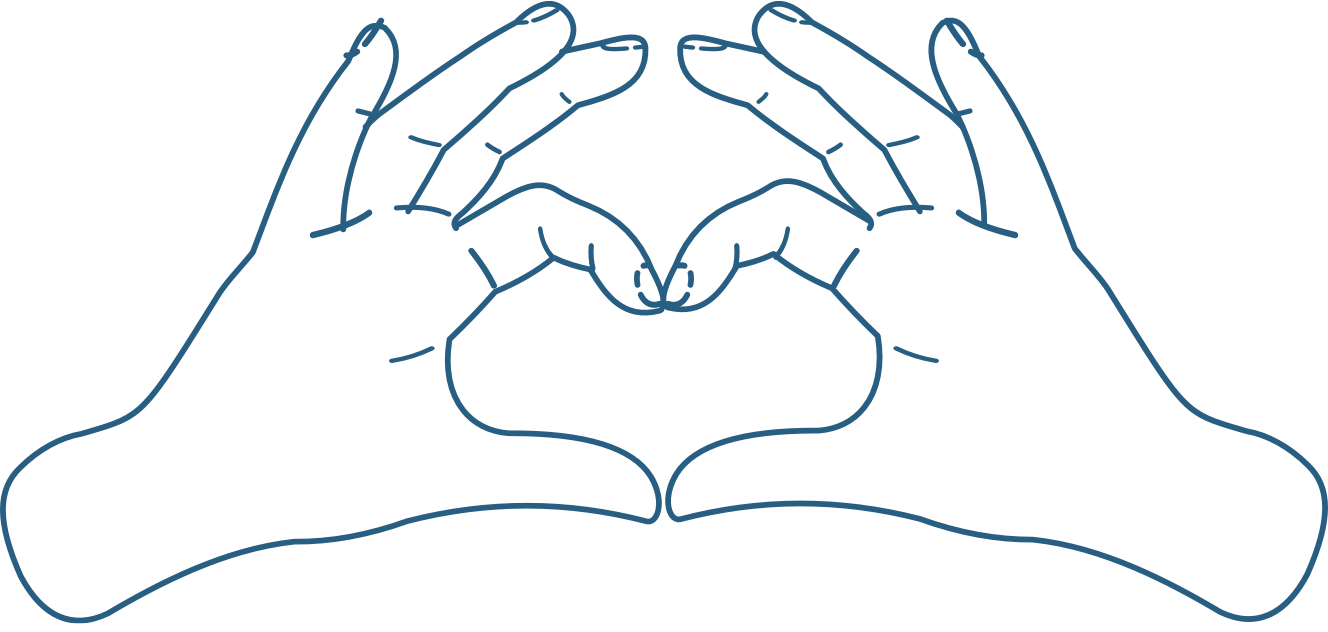Listen on Apple Podcasts | Listen on Spotify | Listen on YouTube
Winstrol is one of the most famous steroids of all time, mainly thanks to a man named Ben Johnson.
In 1988, Johnson was the reigning world champion in the 100-meter dash, widely considered the most prestigious of all track and field events.
He had set a world record a year before, beating Carl Lewis with a time of 9.83 seconds. He was instantly propelled to world fame, reportedly making almost $500,000 a month from endorsements.
He was showered in accolades including the Lou Marsh Trophy and Lionel Conacher Award, and was named the Associated Press Athlete of the Year for 1987.
Johnson cemented his status as the golden boy of track and field on September 24, 1988, in one of the most competitive 100-meter races ever run, when he sprinted to an Olympic gold medal and a new world record of 9.79 seconds.
Unfortunately, this would be the capstone of his career.
Three days later, the Olympic Doping Control Center found traces of an anabolic steroid in Johnson’s urine sample.
The drug?
Stanozolol, aka Winstrol.
Johnson denied taking steroids at first, but was promptly stripped of his new world record and the one he’d set a year before. Later, he admitted to taking steroids such as Winstrol and testosterone since 1981, and was banned for life from professional sprinting after he failed another drug test in 1993.
Although Johnson made stanozolol famous, it’s been used by sprinters, bodybuilders, and athletes of all stripes long before Johnson got busted and is still used today.
It’s known as one of the best steroids for cutting, helping people gain moderate amounts of muscle without any increase in water weight or body fat.
What does the science say, though?
Why are athletes still risking their careers to reap its benefits?
And, what are the side effects?
In this podcast, you’re going to learn the answers to all of these questions and more. You’ll learn . . .
- What Winstrol is
- Why people take Winstrol
- What the Winstrol side effects are
- How to tell if someone is taking Winstrol
- And more.
Let’s get started.
Mentioned on the show:
What did you think of this episode? Have anything else to share? Let me know in the comments below!
Transcript:
Hey, Mike here. And if you like what I’m doing on the podcast and elsewhere, and if you want to help me help more people get into the best shape of their lives, please do consider picking up one of my best selling health and fitness books, including Bigger, Leaner, Stronger for Men, Thinner, Leaner, Stronger for Women, my flexible dieting cookbook, The Shredded Chef, and my 100 percent practical and hands on blueprint for personal transformation.
Inside and outside of the gym, the little black book of workout motivation. Now, these books have sold well over 1 million copies and have helped thousands of people build their best bodies ever. And you can find them on all major online retailers like Audible, Amazon, iTunes, Kobo, and Google Play, as well as in select Barnes and Noble stores.
Again, that’s bigger, leaner, stronger for men. Thinner, leaner, stronger for women, the shredded chef and the little black book of workout motivation. Oh, and I should also mention that you can get any of the audio books 100 percent free when you sign up for an audible account, which is the perfect way to make those pockets of downtime, like commuting.
Meal prepping and cleaning more interesting, entertaining, and productive. So if you want to take audible up on that offer, and if you want to get one of my audio books for free, go to www. legionathletics. com slash audible. That’s L E G I O N athletics slash a U D I B L E. And sign up for your account.
Windstrawl. What is it? How effective is it for gaining muscle and strength and losing fat? And what are its side effects? Those are questions I’m asked fairly often and that I’m going to answer. Now, why Winstroll? Why do people ask about this? Oftentimes it’s because that they hear that Winstroll is a safe and an effective alternative to stronger steroids, including testosterone.
The idea is that with Winstroll, you can get a lot of the muscle building benefits and the strength gaining benefits that you want without a lot of negative side effects that are often associated with steroid use. And, there’s actually some truth to that because Winstroll is engineered to have fewer side effects than other anabolic steroids, including testosterone, but that does not mean that it is safe to use.
So quickly, let’s start with what Winstroll is. Winstroll is the brand name of a drug called Stenolazole. And that drug was created by taking the natural hormone DHT and modifying it. Modifying it to enhance its muscle building properties and reduce the unwanted side effects. Now, this drug was created in the sixties and it went mainstream after Ben Johnson got busted for it in 1968.
And since then, many people have turned to it because gram for gram, it has a higher anabolic to androgenic ratio than testosterone. And what that means is gram for gram, Winstroll has Stronger muscle building effects. It has stronger anabolic effects in the body and less of the unwanted side effects that often come with steroid use like hair loss, acne, increased aggression, infertility, and so forth.
But that doesn’t necessarily mean that you are going to gain more muscle and strength with windstraw than you will with testosterone or some other anabolic steroid. In other words, in actual practice, windstraw is not more anabolic than testosterone, even though theoretically it was at least believed that it was going to be.
And to understand why, we have to quickly talk about how the body metabolizes this drug. And this also explains why Winstroll has fewer side effects than other steroids. So what is unique about Winstroll is that it is not converted into estrogen in the body. Most steroids, including testosterone, dianabol, decaderobolin and others, They all increase estrogen levels because there is an enzyme in the body called aromatase that converts a small portion of these drugs into estrogen.
And so then the more of those types of drugs that you take, the higher your estrogen levels rise and the higher estrogen levels rise, The closer you get to the point where you start to experience feminizing side effects like man boobs and puffy nipples, sore nipples, water retention, and other things like that.
This, of course, is one of the reasons why people who are taking anabolic steroids, if they’re doing it right, are almost always also taking an estrogen blocker of some kind, a drug. Not a natural one because there are no natural estrogen blockers that do anything really, but there are drugs that work very well.
Now what many people don’t know though, including many people who are using steroids and just aren’t informed estrogen. Also helps you gain muscle faster. You don’t necessarily want very low estrogen levels because estrogen improves muscle recovery. It increases the number of androgen receptors in your muscle cells, which makes them more receptive to the anabolic hormones in your body.
And it also can help you even train harder and just have better workouts by raising your serotonin levels. And that’s why Winstral is an actual practice, not as effective for gaining muscle as these other steroids, at least some of these other steroids that turn into estrogen in the body. That increase in estrogen helps with muscle gain along with the increase in testosterone that comes with many of these other drugs that you can take.
And that’s why many bodybuilders will add windstraw to their cycle that will include almost always testosterone and often other drugs that do turn into estrogen in the body. So the windstraw is used to just supplement the overall testosterone. Effect. It’s used to boost the testosterone side of things without affecting the estrogen side.
Hey, before we continue, if you like what I’m doing here on the podcast and elsewhere, and if you want to help me help more people get into the best shape of their lives, please do consider picking up one of my best selling health and fitness books. My most popular ones are Bigger Leaner Stronger for Men, Thinner Leaner Stronger for Women, my flexible dieting cookbook, The Shredded Chef, and my 100 percent practical hands on blueprint for personal transformation, The Little Black Book of Workout Motivation.
Now, these books have sold well over 1 million copies and have helped Thousands of people build their best body ever, and you can find them anywhere online where you can buy books like Amazon, Audible, iTunes, Kobo, and Google Play, as well as in select Barnes Noble stores. So again, that is Bigger Leaner Stronger for Men, Thinner Leaner Stronger for Women, The Shredded Chef, and The Little Black Book of Workout Motivation.
Oh, and one other thing is you can get Any one of those audio books 100 percent free when you sign up for an Audible account. And that’s a great way to make those pockets of downtime, like commuting, meal prepping, and cleaning more interesting, entertaining, and productive. Now, if you want to take Audible up on that offer and get one of my audio books for free, just go to legionathletics.
com slash Audible and sign up for your account. Okay, so now let’s talk about risks and side effects because despite what many people would tell you windstraw is not safe to take it is not safer or healthier than testosterone, for example, so the side effects of windstraw are And I should add the clinically proven side effects.
There’s no question that these things happen. In fact, I think side effects is the wrong term. It really should just be the consequences of when stroll or a drop in your NAS, in your natural testosterone production. And it can be a significant drop in a drop that is very hard to correct. You can really mess your body up with even one cycle of steroids.
If you do it wrong. And you’ll also experience a testicle shrinking. Your nuts are going to get small. Acne is common and also exposure to other types of potentially harmful toxins. And what’s more, Winstroll is an oral steroid. It’s a pill that you take. And that’s appealing to many people because they don’t want to mess with needles.
But the major downside is that means that your liver has to process the drug. Now, as drugs like Winstraw and other oral steroids are very harsh on the liver, they’re very hard on the liver. If you take too much for too long, you can damage your liver. You can even cause liver failure. We also know that Winstraw increases the risk of cancer and if you abuse it can just straight kill you.
Now, as for Winstral’s effects on your natural testosterone production like most anabolic steroids it tanks it. Your natural production is going to hit rock bottom if you are taking Winstral, especially if taking Winstral with other steroids and correcting that can be a long, hard road. It can take many months.
And again, in some people there is permanent damage. Now, I mentioned that taking Winstrol also exposes you to other potentially harmful toxins. Why is that? No companies currently produce Winstrol for human consumption. So the Winstrol that is being used by bodybuilders is being produced by private individuals, rogue chemists in their own labs, or is being stolen from pharmaceutical companies.
And so what that means then is unless you know that the windstraw you’re about to take was indeed gotten from some pharmaceutical company that is making pharmaceutical grade windstraw or was gotten from some clean, legit lab that makes essentially pharmaceutical grade drugs, you don’t really know what you’re putting in your body.
It might be the real deal. It might be. The real deal. It might be like some wind straw and then some other drugs that you have no idea about, or it might just be counterfeit altogether. And again, because a lot of the wind straw on the market is just made in underground. It is not unheard of to get wind straw that is tainted with toxins and impurities and pollutants that can cause very serious short term and even long term health problems.
I should also mention that some of the other side effects that are commonly associated with windstraw use include insomnia, hair loss, erectile dysfunction, increased risk of prostate, brain, and breast cancer, and more. So again, this is a pretty nasty drug, and obviously, I don’t recommend it. My personal position on steroids is I’ve never used them and I never will.
And there are a number of reasons for that health and legality being at the top of the list. And I don’t recommend that other people use steroids unless maybe they have to for their career. For example, if they’re a top tier athlete and they really don’t have a choice. I understand that most top tier athletes don’t have a choice.
It’s either take the drugs or quit basically. Or if someone’s in Hollywood and they’re told to gain 30 pounds of muscle in three months so they can be the next Avenger muscle guy, then, yeah, I understand that the only way that’s going to happen is with steroids. And when seven and. Eight figures and beyond when you consider the lifetime of a career and what breaking through can really be worth over the lifetime of a career.
Yeah. It’s reasonable to, to take the risk and basically roll the dice and hope that you come out healthy and functional on the other end. Most people that ask me about steroids, all of them are not top tier athletes or on the brink of being Hollywood celebrities. They’re just everyday people who want to get stronger, get bigger, get leaner.
And for that, you definitely do not need steroids. And unless your dream physique is the Hulk, you can look great. You can feel great. You can maintain. Awesome body composition without steroids. It takes a bit longer. Steroids does speed it up, but if you do it naturally, you can maintain it for the rest of your life healthily.
And so if you are considering taking Winstroll, please do think twice about it and ask yourself, is it really Worth the risks that I’ve outlined for the short lived benefits that you will experience while you’re on the drug. But of course you will lose quite a bit of whatever you’ve gained with drugs when you come off drugs, you can maintain some of it, but you are going to lose some of it as well.
And then you are also. Of course, much more likely now to fall into the trap of going back to the drugs because you get addicted to how they make you feel and how they make you feel in the gym and what you’re able to do with your body while on drugs versus not. All right. That’s it for this video.
I hope you found it helpful. And if you were considering Winstral or other steroids, I hope I have dissuaded you. I hope I have discouraged you from that and encouraged you to just stick to the fundamentals, eat right, train right, make sure you’re getting enough rest and be patient. So if you did the video, please do give it a like by just clicking the little thumbs up down there.
And drop a comment down below, letting me know what you thought and feel free to share any other ideas you might have about wind straw or other steroids. And if you’re really liked the video and you want to know when my next video goes live, just click the red subscribe button over there. It’s free, of course, and then click the bell next to it and YouTube will notify you when I upload my next video.
All right. I hope to see you then. Hey, Mike here. And if you like what I’m doing on the podcast and elsewhere, and if you want to help me help more people get into the best shape of their lives, please do consider picking up one of my bestselling health and fitness books, including Bigger, Leaner, Stronger for Men.
Thinner, leaner, stronger for women, my flexible dieting cookbook, the shredded chef and my 100 percent practical and hands on blueprint for personal transformation inside and outside of the gym. The little black book of workout motivation. Now these books have sold well over 1 million copies and have helped Thousands of people build their best bodies ever and you can find them on all major online retailers like Audible, Amazon, iTunes, Kobo, and Google Play, as well as in select Barnes Noble stores.
Again, that’s bigger leaner stronger for men, thinner leaner stronger for women. The Shredded Chef. And the little black book of workout motivation. Oh, and I should also mention that you can get any of the audio books, 100 percent free when you sign up for an audible account, which is the perfect way to make those pockets of downtime, like commuting.
Meal prepping and cleaning more interesting, entertaining and productive. So if you want to take audible up on that offer, and if you want to get one of my audiobooks for free, go to www. legionathletics. com slash audible. That’s L E G I O N athletics slash a U D I B L E and sign up for your account.
Scientific References +
- Falliers, C. J., Jorgensen, J. R., Tan, L. S., & Bukantz, S. C. (1963). Anabolic Effects of Stanozolol: Reversal of Growth Arrest and Possible Changes in Adult Height Prognosis Among Children With Intractable Asthma Treated With Corticosteroids. American Journal of Diseases of Children, 106(4), 388–401. https://doi.org/10.1001/archpedi.1963.02080050390008
- Kiraly, C. L., Collan, Y., & Alen, M. (1987). Effect of testosterone and anabolic steroids on the size of sebaceous glands in power athletes. American Journal of Dermatopathology, 9(6), 515–519. https://doi.org/10.1097/00000372-198712000-00008
- Skroza, N., Tolino, E., Mambrin, A., Zuber, S., Balduzzi, V., Marchesiello, A., Bernardini, N. T., Proietti, I., & Potenza, C. (2018). Adult acne versus adolescent acne: A retrospective study of 1,167 Patients. Journal of Clinical and Aesthetic Dermatology, 11(1), 21–25. /pmc/articles/PMC5788264/?report=abstract
- Lynn, D., Umari, T., Dellavalle, R., & Dunnick, C. (2016). The epidemiology of acne vulgaris in late adolescence. Adolescent Health, Medicine and Therapeutics, 7, 13. https://doi.org/10.2147/ahmt.s55832
- Hoffman, J. R., & Ratamess, N. A. (2006). Medical issues associated with anabolic steroid use: are they exaggerated? Journal of Sports Science & Medicine, 5(2), 182–193. http://www.ncbi.nlm.nih.gov/pubmed/24259990
- Kerr, J. B., & Sharpe, R. M. (1985). Follicle-stimulating hormone induction of ley dig cell maturation. Endocrinology, 116(6), 2592–2604. https://doi.org/10.1210/endo-116-6-2592
- Nedresky, D., & Singh, G. (2019). Physiology, Luteinizing Hormone. In StatPearls. StatPearls Publishing. http://www.ncbi.nlm.nih.gov/pubmed/30969514
- Rosenfield, R. L., Perovic, N., Ehrmann, D. A., & Barnes, R. B. (1996). Acute hormonal responses to the gonadotropin releasing hormone agonist leuprolide: dose-response studies and comparison to nafarelin--a clinical research center study. The Journal of Clinical Endocrinology & Metabolism, 81(9), 3408–3411. https://doi.org/10.1210/jcem.81.9.8784105
- Burger, H. G. (2002). Androgen production in women. Fertility and Sterility, 77(SUPPL. 4), 3–5. https://doi.org/10.1016/s0015-0282(02)02985-0
- Tyagi, V., Scordo, M., Yoon, R. S., Liporace, F. A., & Greene, L. W. (2017). Revisiting the role of testosterone: Are we missing something? Reviews in Urology, 19(1), 16–24. https://doi.org/10.3909/riu0716
- Hardt, A., Stippel, D., Odenthal, M., Hölscher, A. H., Dienes, H.-P., & Drebber, U. (2012). Development of Hepatocellular Carcinoma Associated with Anabolic Androgenic Steroid Abuse in a Young Bodybuilder: A Case Report. Case Reports in Pathology, 2012, 1–5. https://doi.org/10.1155/2012/195607
- Gorayski, P., Thompson, C. H., Subhash, H. S., & Thomas, A. C. (2008). Hepatocellular carcinoma associated with recreational anabolic steroid use. British Journal of Sports Medicine, 42(1), 74–75. https://doi.org/10.1136/bjsm.2007.03932
- Evert, M., & Dombrowski, F. (2008). Hepatozelluläre karzinome in der nichtzirrhotischen leber. Pathologe, 29(1), 47–52. https://doi.org/10.1007/s00292-007-0953-3
- Hernandez‐Nieto, L., Bruguera, M., Bombi, J. A., Camacho, L., & Rozman, C. (1977). Benign liver‐cell adenoma associated with long‐term administration of an androgenic‐anabolic steroid (methandienone). Cancer, 40(4), 1761–1764. https://doi.org/10.1002/1097-0142(197710)40:4<1761::AID-CNCR2820400454>3.0.CO;2-C
- Winwood, P. J., Robertson, D. A. F., & Wright, R. (1990). Bleeding oesophageal varices associated with anabolic steroid use in an athlete. Postgraduate Medical Journal, 66(780), 864–865. https://doi.org/10.1136/pgmj.66.780.864
- Ahlgrim, C., & Guglin, M. (2009). Anabolics and Cardiomyopathy in a Bodybuilder: Case Report and Literature Review. Journal of Cardiac Failure, 15(6), 496–500. https://doi.org/10.1016/j.cardfail.2008.12.014
- Štimac, D., Milić, S., Dintinjana, R. D., Kovač, D., & Ristić, S. (2002). Androgenic/anabolic steroid-induced toxic hepatitis. Journal of Clinical Gastroenterology, 35(4), 350–352. https://doi.org/10.1097/00004836-200210000-00013
- Nguyen, K. D., Sundaram, V., & Ayoub, W. S. (2014). Atypical causes of cholestasis. World Journal of Gastroenterology, 20(28), 9418–9426. https://doi.org/10.3748/wjg.v20.i28.9418
- Sánchez-Osorio, M., Duarte-Rojo, A., Martínez-Benítez, B., Torre, A., & Uribe, M. (2008). Anabolic-androgenic steroids and liver injury. Liver International, 28(2), 278–282. https://doi.org/10.1111/j.1478-3231.2007.01579.x
- Krüskemper, H. L., & Noell, G. (1966). Liver toxicity of a new anabolic agent: Methyltrienolone (17α-Methyl-4,9,11-estratriene-17β-ol-3-one). Steroids, 8(1), 13–24. https://doi.org/10.1016/0039-128X(66)90114-0
- Hinchliffe, S. A., Woods, S., Gray, S., & Burt, A. D. (1996). Cellular distribution of androgen receptors in the liver. Journal of Clinical Pathology, 49(5), 418–420. https://doi.org/10.1136/jcp.49.5.418
- Labrie, F., Luu-The, V., Lin, S. X., Labrie, C., Simard, J., Breton, R., & Bélanger, A. (1997). The key role of 17β-hydroxysteroid dehydrogenases in sex steroid biology. Steroids, 62(1), 148–158. https://doi.org/10.1016/S0039-128X(96)00174-2
- Plymate, S. R., Leonard, J. M., Paulsen, C. A., Fariss, B. L., & Karpas, A. E. (1983). Sex hormone-binding globulin changes with androgen replacement. Journal of Clinical Endocrinology and Metabolism, 57(3), 645–648. https://doi.org/10.1210/jcem-57-3-645
- Sinnecker, G., & Köhler, S. (1989). Sex hormone-binding globulin response to the anabolic steroid stanozolol: Evidence for its suitability as a biological androgen sensitivity test. Journal of Clinical Endocrinology and Metabolism, 68(6), 1195–1200. https://doi.org/10.1210/jcem-68-6-1195
- Selby, C. (1990). Sex hormone binding globulin: Origin, function and clinical significance. In Annals of Clinical Biochemistry (Vol. 27, Issue 6, pp. 532–541). Ann Clin Biochem. https://doi.org/10.1177/000456329002700603
- Jarvis, C. I., Lynch, A. M., & Morin, A. K. (2008). Management strategies for premenstrual syndrome/premenstrual dysphoric disorder. In Annals of Pharmacotherapy (Vol. 42, Issues 7–8, pp. 967–978). https://doi.org/10.1345/aph.1K673
- Rance, N. E., & Max, S. R. (1984). Modulation of the cytosolic androgen receptor in striated muscle by sex steroids. Endocrinology, 115(3), 862–866. https://doi.org/10.1210/endo-115-3-862
- Hobbs, C. J., Plymate, S. R., Rosen, C. J., & Adler, R. A. (1993). Testosterone administration increases insulin-like growth factor-I levels in normal men. Journal of Clinical Endocrinology and Metabolism, 77(3), 776–779. https://doi.org/10.1210/jcem.77.3.7690364
- Knudsen, J. F., & Max, S. R. (1980). Aromatization of androgens to estrogens mediates increased activity of glucose 6-phosphate dehydrogenase in rat levator ani muscle. Endocrinology, 106(2), 440–443. https://doi.org/10.1210/endo-106-2-440
- Schulster, M., Bernie, A. M., & Ramasamy, R. (2016). The role of estradiol in male reproductive function. In Asian Journal of Andrology (Vol. 18, Issue 3, pp. 435–440). Medknow Publications. https://doi.org/10.4103/1008-682X.173932
- Kicman, A. T. (2008). Pharmacology of anabolic steroids. In British Journal of Pharmacology (Vol. 154, Issue 3, pp. 502–521). Wiley-Blackwell. https://doi.org/10.1038/bjp.2008.165
- Davey, R. A., & Grossmann, M. (2016). Androgen Receptor Structure, Function and Biology: From Bench to Bedside. The Clinical Biochemist. Reviews, 37(1), 3–15. http://www.ncbi.nlm.nih.gov/pubmed/27057074
- Ustuner, E. T. (2013). Cause of androgenic alopecia: Crux of the matter. Plastic and Reconstructive Surgery, 1(7). https://doi.org/10.1097/GOX.0000000000000005










